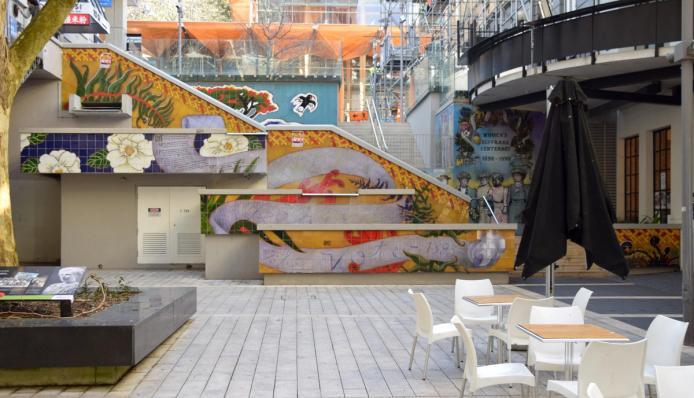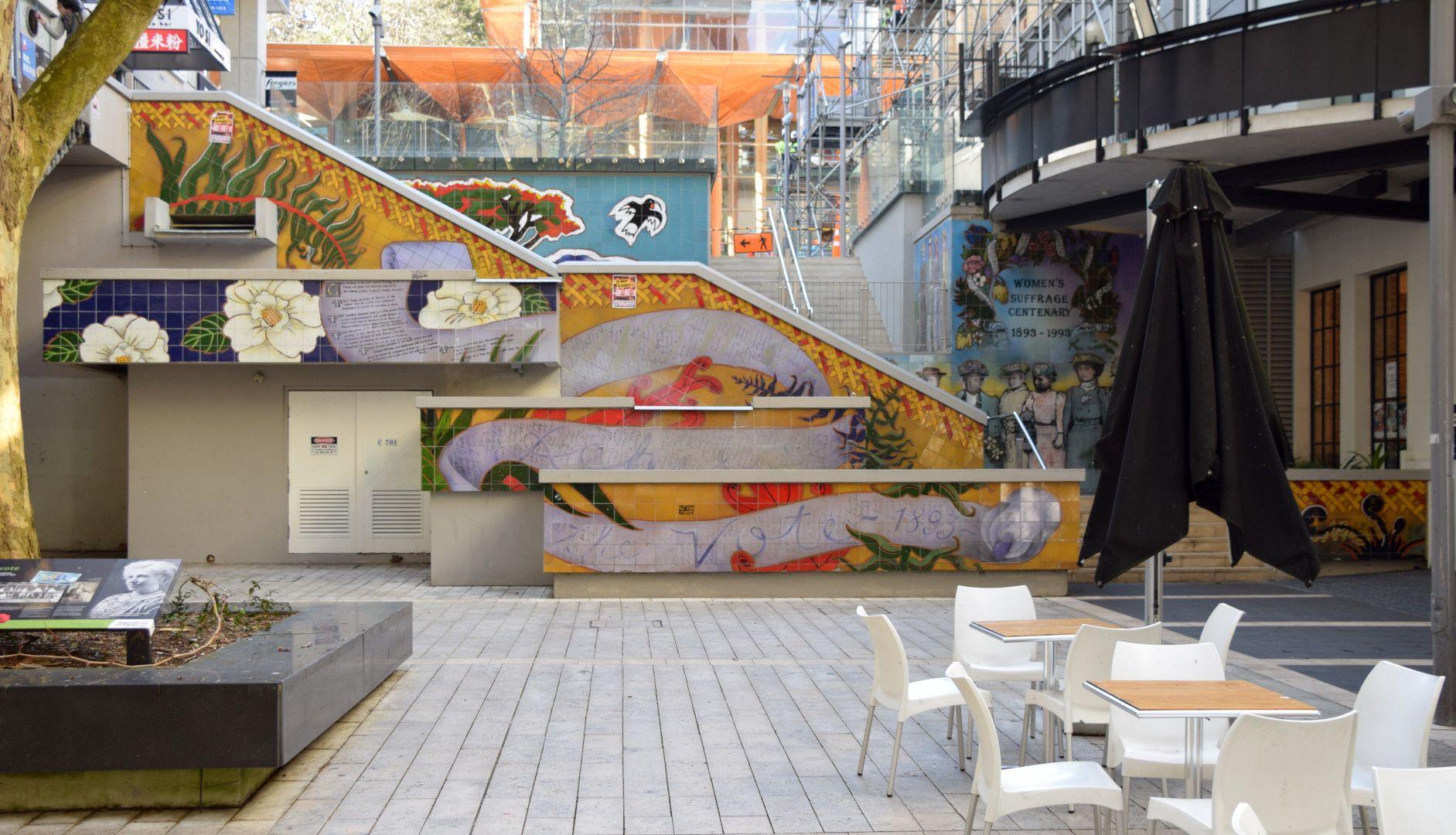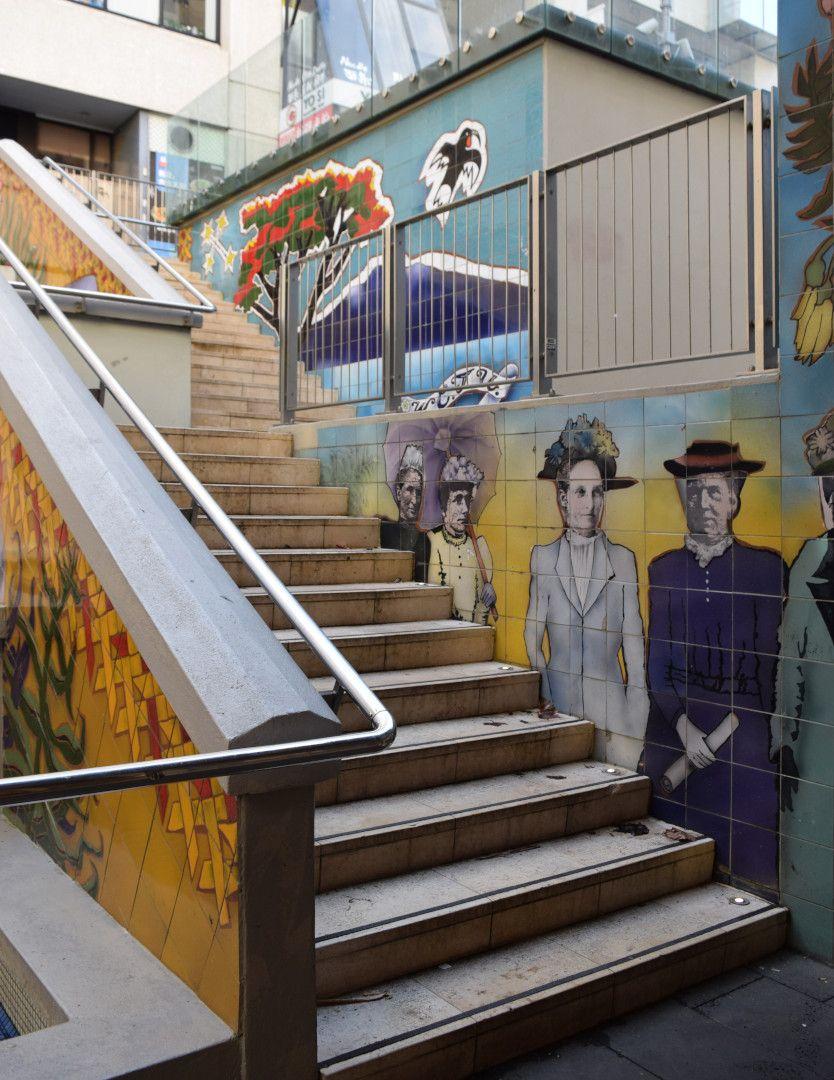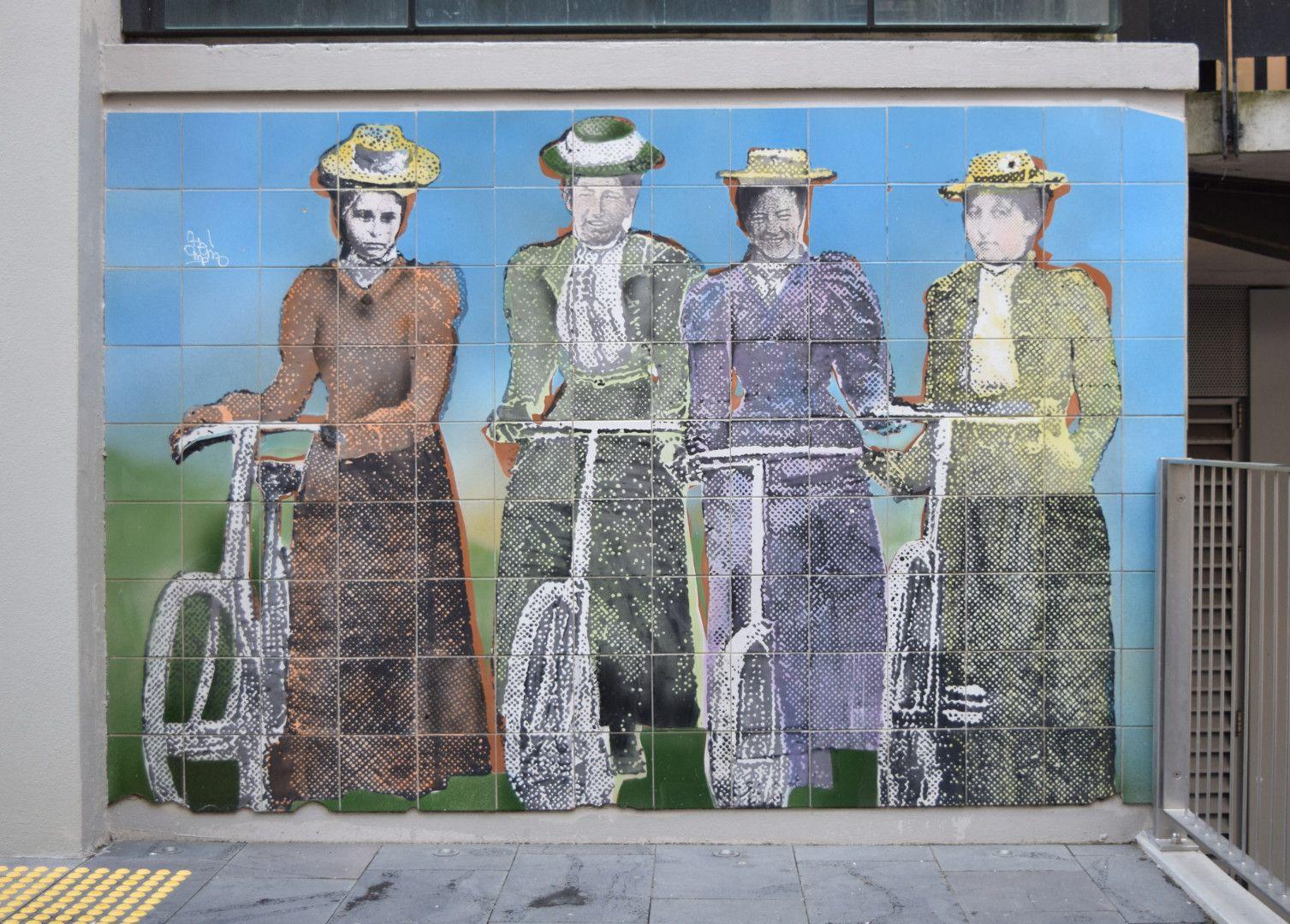Women's Suffrage Centenary Project Whakatu Wahine 1893-1993
Jan Morrison
Claudia Pond Eyley
Type
- Mural
- Fountain
Medium
- Ceramic
- Concrete
- Stainless steel
- Fountain/water feature mechanism
Dimensions
- H17,000 x W14,000 x D7000mm

Jan Morrison & Claudia Pond Eyley, 'Women's Suffrage Centenary Project Whakatu Wahine 1893-1993' (detail) (1993), Te Hā o Hine Place/Khartoum Place, Tāmaki Makaurau Auckland.
Image: Bronwyn Holloway-Smith, Public Art Heritage Aotearoa New Zealand, 2021



- DETAILS
- MAP
Description
This mural is made up of 2,000 coloured tiles mounted onto the sides of the Khartoum Place stairs, walls and pools, as 12 separate panels. Seven of the panels are rectangular and the other five follow the angles of the stairs and pools.
Information panel installed with the work reads:
“Women’s Suffrage Centenary Project Whakatu Wahine 1983-1993
He whakahonore tenei ti te wahine mai tamakimakaurau ki te raki
The struggle to secure the vote for women in 1983 was long and hard. This series of tiles panels was designed to represent that struggle in the Northland region of New Zealand. This region is symbolised by the landscape panel. Here the huia, sacred to the Maori but now extinct, reminds us of the passing of time……………
We honour and celebrate those who worked in different ways towards the goal of Women’s Suffrage. They include Elizabeth Caradus, Amey Daldy, Meri Te Tai Mangakahia, Lizzie Rattray, Annie Jane Schnackenberg, Anne Ward and Elizabeth Yates – the first woman to be elected to a local body position as Mayor of Onehunga. Some of these women wear the white ribbon of the W.C.T.U., (Women’s Christian Temperance Union).
Their efforts are represented by the main motif of the mural, Kate Shepherd’s Scroll. This petition, which united women across the country, was signed by over 25,000 women and presented to the New Zealand Parliament in 1983. White camellias were also presented to members of parliament who supported the Women’s Franchise Bill.
The central panels are bordered with a Maori flax kete pattern, a weaving together of cultures. Images transformation and growth – unfolding ferns and the koru – support the main theme of the social reform for women.
We wish to acknowledge with grateful thanks the many people with whom we consulted, especially:- The Tangata Whenua, The Auckland Public Library, The Auckland Institute & Museum Library and The National Archives Wellington – (as the place where the original petition for the 1983 Women’s Suffrage Scroll is preserved)”
This work was unveiled by Her Excellency The Governor General Dame Catherine Tizard on the 20th day of September 1993.
In 2016, Waitematā Local Board voted to change the name of the lower section of Khartoum Place, to acknowledge its location. Ngāti Whātua Ōrākei gifted the name Te Hā o Hine Place, from the whakataukī (proverb): Me aro koe ki te Hā o Hine-ahu-one (pay heed to the dignity of women).
The women illustrated in the mural include: Amey Daldy (Auckland Women's Franchise League President), Anne Ward (Women's Christian Temperance Union), Annie Jane Schnackenberg (Missionary and Women's Christian Temperance Union President), Elizabeth Caradus, Elisabeth Yates (first woman mayor in New Zealand and the British Empire), Fanny Brown (one of the first seven women enrolled to vote), Ida Wells (First National Secretary of the National Council of Women), Lizzie Frost Rattray (journalist), Matilda Allsopp (one of the first seven women enrolled to vote), Meri Te Tai Mangakahia, and a young New Zealand University graduate who studied in England (to represent the London contingent).”
All material involving the making of the mural, including drawings, sketches and digital files, are now held by the Auckland Public Library.
